A while back I made a post about paper rush seatweaving and the perils of not stuffing the seats with cardboard or something else to protect the strands.
I was having problems with my photo editor on the blog that day, so was not able to post the picture of the seat I was describing.
Here are some pictures of the paper rush seatweaving process, pointing out why you need to stuff the gussets on a rush chair seat.
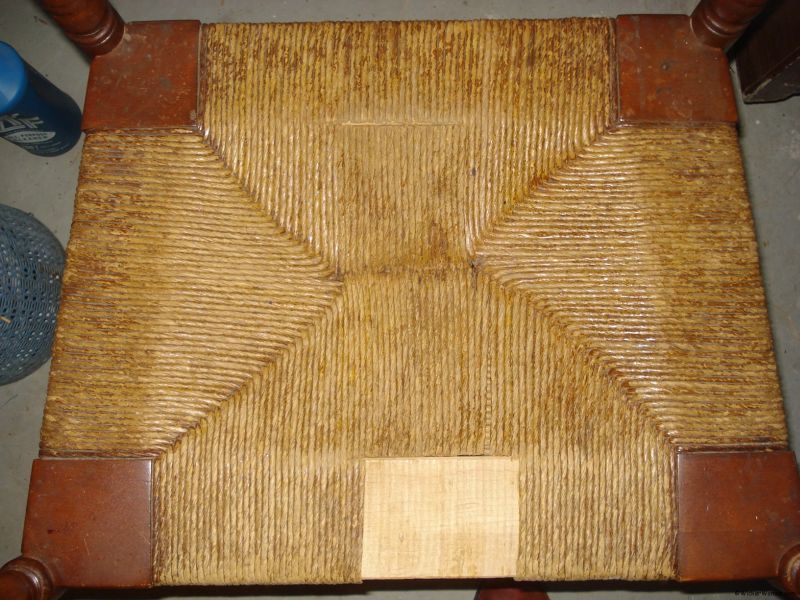
Remove broken paper rush from the seat
After cutting off all the old rush, I used a rasp to soften the sharp edges of the rails, before doing the next step of weaving.
Weave a new seat with paper rush
Then I began the weaving and did many rounds until the rails began to fill up. I made certain to leave myself enough room to insert the cardboard triangles inside the gussets.
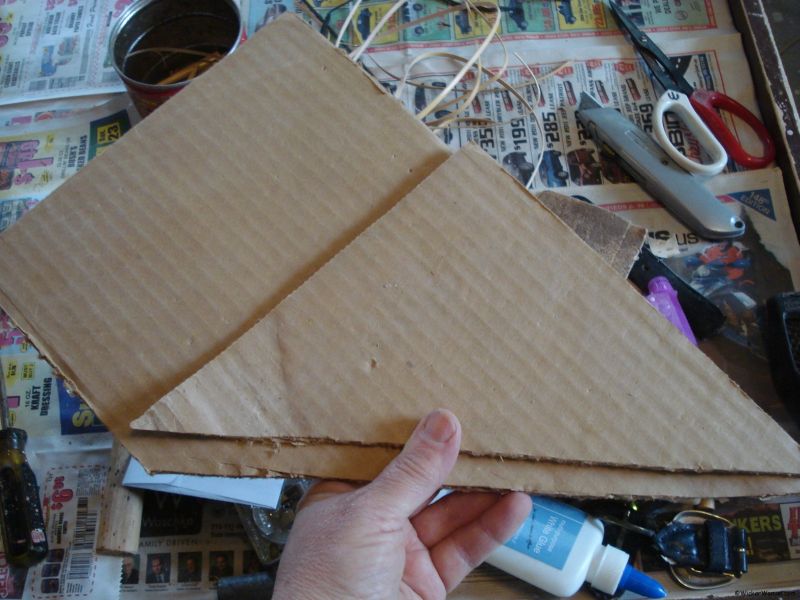
Stuff and pad the pockets
The next step was to add the cardboard triangles in the four gussets or pockets on both the top and bottom of this rush chair seat.
Here’s a picture of the four gussets or pockets on the top side of the rush seat, already stuffed with cardboard triangles.
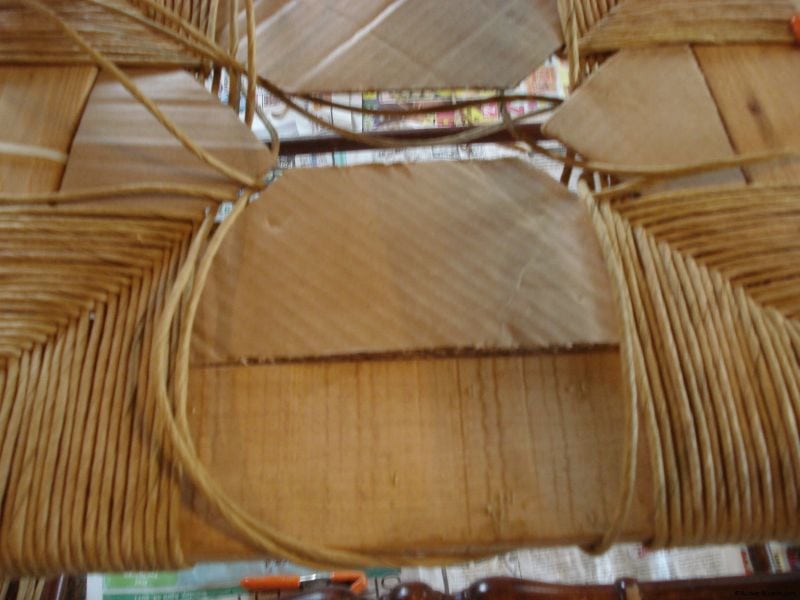
cardboard stuffing
Without the cardboard stuffing and rounding off the sharp edges of the flat rails, the paper rush strands would break again.
And here’s a picture of the bottom four gussets, all stuffed with cardboard triangles also.
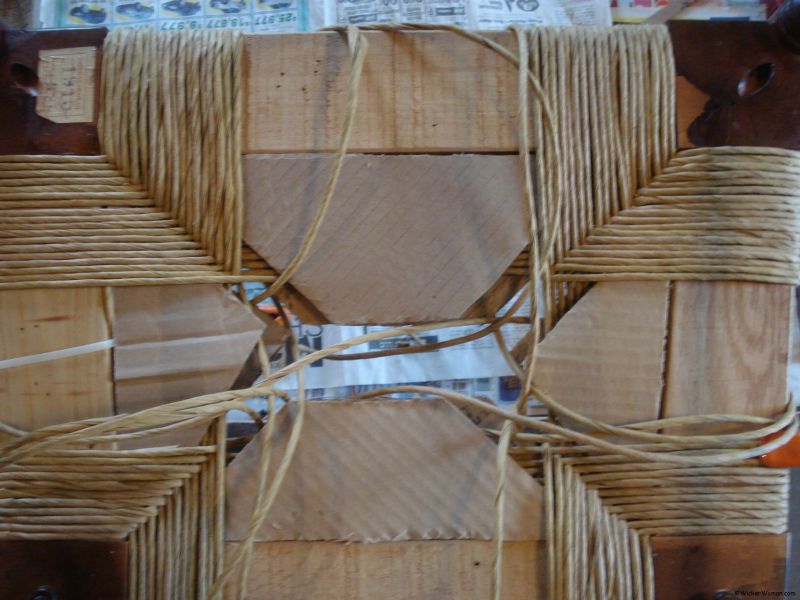
cardboard stuffing
Only one layer of cardboard was needed on both the top and bottom of this chair, since the seat rails were very flat (instead of being made out of round dowels) and the pockets created were rather flat, too.
Complete the weaving process
And the final step was to finish weaving the remaining chair seat, ending up in the middle on the bottom, securing that final strand with a knot.
Now the seat is protected with cardboard stuffing in the top and bottom four gussets or pockets, supporting the entire seat.
newly woven paper rush seat
And finally, a picture of the completed woven paper rush seat on the 1915 Colonial-style ladderback armchair.
However, this picture was taken before I applied a couple of coats of shellac. Doesn’t that look nice?
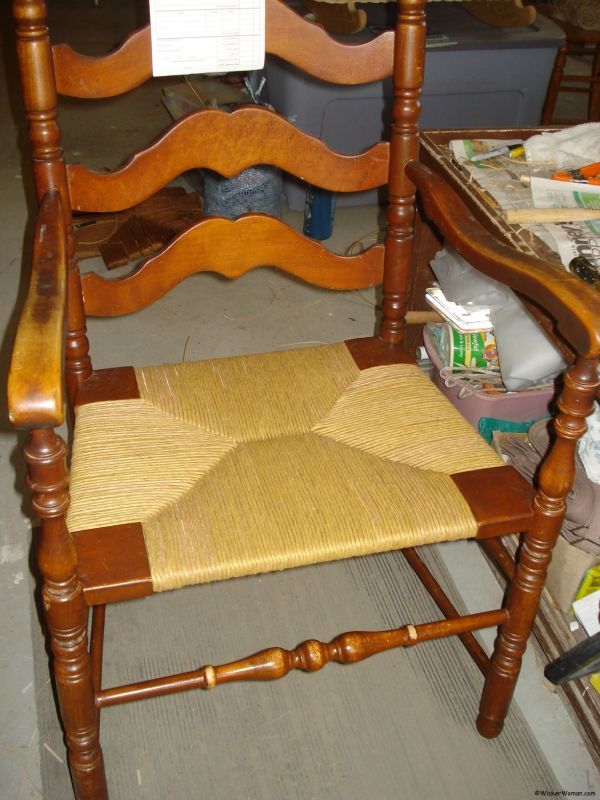
Do you also stuff the pockets or gussets of a rush chair seat with cardboard triangles, or do you use something else? Tell me in the comments below.

What are your thoughts about this blog post?
Leave your comments below and share with your social networks!
~~Live Well, Laugh Often, Love Much ~~
Happy Weaving, until next time!


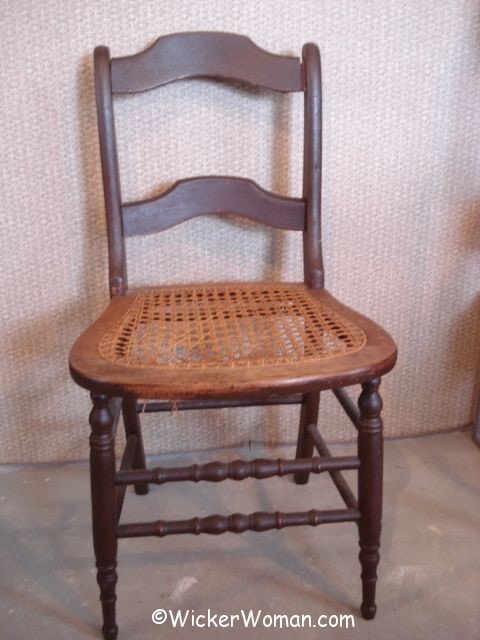

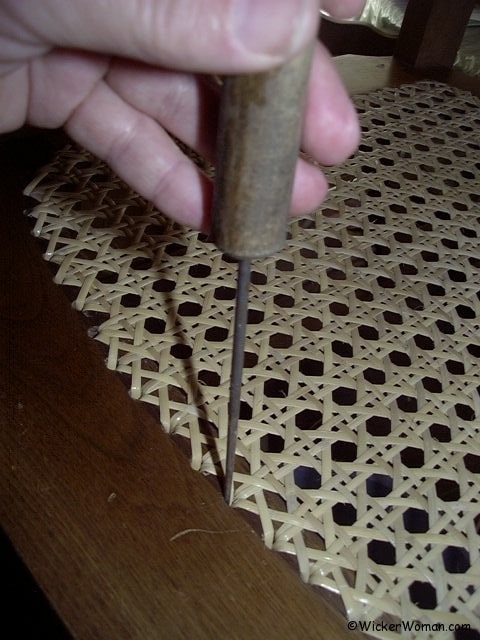
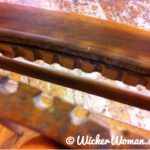
Hi, I just bought six paper rush seat chairs that I’m told are dated from 1900-1920. They are in surprisingly great condition. I’d like to protect the seats with some sort of varnish as recommended on your site. Do you have a brand that you recommend?
I’m grateful for all information.
Hi Krista,
Just about any brand will do for the varnish, but I frequently use Varathane, General Finishes, and Minwax and apply using a china bristle brush. Don’t use any of the oils on paper rush, it tends to pool up and soak in unevenally. Take a look at my Amazon Store in the Stains & Paints . You can click on an image and then go to their store to see a complete listing of the company’s products, too. Hope this helps!
Just restored a cpl of ladder backs with fiber rush and don’t want to mess up now..I bought warm poly in a gloss..is this an acceptable finish?..
Have been attempting to do a paper rush seat. Having trouble with the first four strands. I wet the paper for just 15-20 sec. sling off excess, but after just a short time the paper starts to FUZZ. It’s brand new rush, just bought.
AND the front rail is not straight to the post, there is a dip before the post. When I place the strands side by side, the angle of the third and fourth strands are off of 90 degrees, no matter how I attempt to tap/smoosh them together. Am I supposed to cover the first strand with the second?
In the orig seat, the strands were tacked way up the rail almost to the back. How do you know how far apart to tack the side strands?
Robin,
Sorry you are having problems with the fuzzy paper rush, I’ve had that happen to me before, too. My solution was to NOT wet the paper by immersing it in water. And in fact, I almost NEVER do that for this very reason and it has a tendency to unravel easily when wet. What I do in this kind of situation is to lightly spray the strands with water only as I’m forming the centers.
Just dampen it ever so slightly and use your fingers to “pinch” the rush at the corner point or right where you turn directions, so it’s a sharp, crisp turn. And then also take care to compress the rush on the rails using a block of wood and a small hammer to make sure each strand on the rails stays in line with the corner fold to stay in the 90º position.
As to that “dip” on the front rail at the post, you could wrap some thin, flat cording or rope or even smash the rush down flat with a hammer on the floor or something, making it a flattened cord of rush. Then wrap the flat strands around the rail at the dip, building it up so it’s in line with the rest of the rail.
Once that rail is straight across the full width, then you can proceed to weave the seat as you would normally and all will be fine. Each strand of the round rush that you are using to weave the seat will lay properly right next to each other and won’t be overlapping or anything goofy like that.
It doesn’t matter too much how far back you go before tacking on the rush to the siderails. Just be sure to keep each strand in as straight a line as possible. Sometimes you will want/need to go back pretty far and other times, not. It really depends on the angle of the rails in relationship to how many strands it takes to “square up” the seat and how many strands need to be there in the gussets.
You’ve just given me several ideas for more blog posts, thanks! Hope this has been helpful, good luck on the project!
Hi!
I stumbled on to your site, while looking for a cane back sofa we purchased a couple of days ago.
Great site by the way, A lot of great info. I was hoping I could send you some pictures and see if you might know some info about the sofa.
Thank you,
Randy & Kim
Thanks for the compliments on my site Randy & Kim and I’m happy to hear you’ve gotten a cane back couch, but I don’t give appraisals. I am not certified to do so and whenever you get an appraisal, you want to get one from someone that’s certified so the appraisal is authentic and will stand up in court, should you ever need that. However, Richard Saunders is a wicker furniture author, has been a restoration specialist (although does not do repairs anymore for hire) and is a certified wicker furniture appraiser. He’s listed on my National Furniture Repair Directory in the Wicker section, so please contact him about the appraisal of your cane back sofa.
Beautiful, Cathryn !!
I still do not like doing rush and probably never will.
Do you prefer varnish to shellac ?
Enjoy,
Jan
Yes Jan, I still prefer using old fashioned varnish on the paper fibre rush, because as I’ve stated before, if you get water spots on the shellac, it leaves a white spot or patch and I don’t like that. Whereas with a varnished seat, a spill doesn’t hurt or change the color of the rush. And we all know how many times grandkids or adults for that matter, can spill on chairs don’t we?
Thanks. I never thought to stuff the bottom and I imagine it makes a difference. So much to learn… your site is very helpful.
Thanks so much for the compliment on my site Lori. Be sure to subscribe to the chair caning blog so you don’t miss anything and check out the rest of my site for tons more chair caning and wicker repair information!